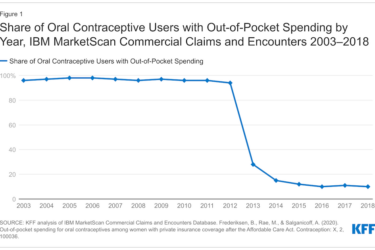
Next month, all clinical laboratories must make patients’ laboratory test results available to patients who request them.
Under rules three federal agencies issued in February, labs must either mail the results to patients or put them up in a secure site online within 30 days of receiving a request from a patient or a patient’s representative.
When the rules were published Feb. 3, Joseph Conn explained in Modern Healthcare that the new regulations pre-empt laws in 13 states and lift a federal exemption in 26 other states. “Previously, in those 39 states, patients could receive or view their lab test results only through their physician or other authorized health care provider,” Conn wrote.
Labs in some health systems already make results available. Kaiser Permanente, for example, has allowed patients to see their test results since 2008. Since the new rules became effective on April 7, some labs have begun complying although compliance is not mandatory until Oct. 6.
The problem for most patients will be understanding their results, as Laura Landro reported in The Wall Street Journal last week. Some labs will simply report the name of a test (usually using only an acronym), the actual result, and a reference or normal range, leaving patients with little or no additional information.
Journalists seeking information on individual tests and on how clinical labs operate may find Lab Tests Online to be a useful resource. Produced and maintained by the American Association for Clinical Chemistry, this site explains the common tests patients get and how to read a lab report and reference ranges, among other topics.
More detailed information is available from clinical labs in academic medical centers. One of the best of these is ARUP Laboratories, which is affiliated with the Pathology Department at the University of Utah. In addition to offering a test menu online, ARUP offers ARUP Consult, a site to help physicians select and interpret tests. The consult site explains the steps physicians take to diagnose conditions, the epidemiology involved, the tests to order, and in some cases a testing algorithm. See, for example, this algorithm for diagnosing Lyme disease.
Once patients start getting their test results, they may find problems their physicians have failed to address. Landro reported that physicians should contact patients before patients get any abnormal test results but often patients get such results without first hearing from their doctors. Such communication failures happen about once in every 14 tests, she wrote.
Journalists covering stories about lab test results and lab operations may want to read the suggestions Ellen Gabler offers in our Shared Wisdom section where she writes about covering clinical laboratories and other challenging, technical topics. An award-winning investigative reporter, Gabler (@egabler) is an assistant editor at the Milwaukee Journal Sentinel. She recently wrote about flaws in the nation’s newborn screening program for a project, Deadly Delays, that earned an Award for Excellence in Health Journalism, the Selden Ring Award, the Scripps Howard Award for Investigative Reporting, and an award from Investigative Reporters and Editors, among others.









